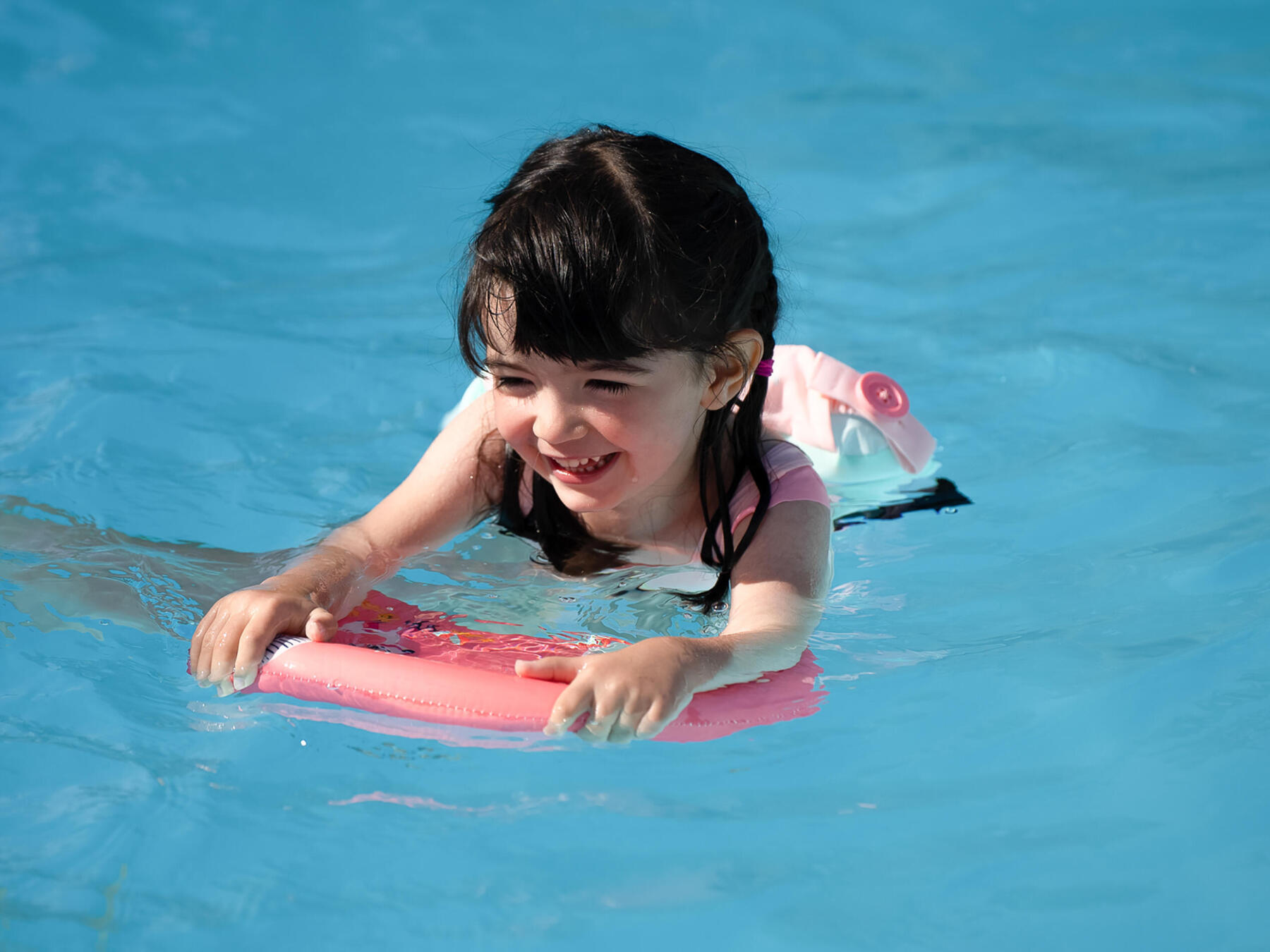From what age can children learn to swim?
Babies can start swimming lessons from the age of 4 months if they have had their vaccinations (after the DT Polio 2nd jab). And as you would imagine, the sooner baby feels the familiar sensation of amniotic fluid, the more comfortable they will be in water. Some swimming pools have dedicated sessions for babies and their parents, a great way to spend some quality family time if baby swimming lessons are full.
But it is important to remember that when it comes to the stages of child development, everything in its own time! Everyone is different and will do things at their own pace. The stages in which your child learns to swim will not necessarily be the same as those of their little friends. And if your baby cries during their first session, try a second time at a later date and if that one also goes catastrophically... know when it's time to leave your baby alone. You may not have a natural-born swimmer, but all is not lost. It's just not the right time yet. They will have swimming lessons in primary school so rest assured that one way or another they will learn to swim.
Every child is different and everyone approaches the pool environment and the activity in their own way. Do not try to compare your child's skills with those of others; some will prefer to stay in the arms of a parent or play at the edge of the pool, others will be more adventurous. Every situation your child chooses to experience will help them learn and develop. So let them decide what they are interested in.





